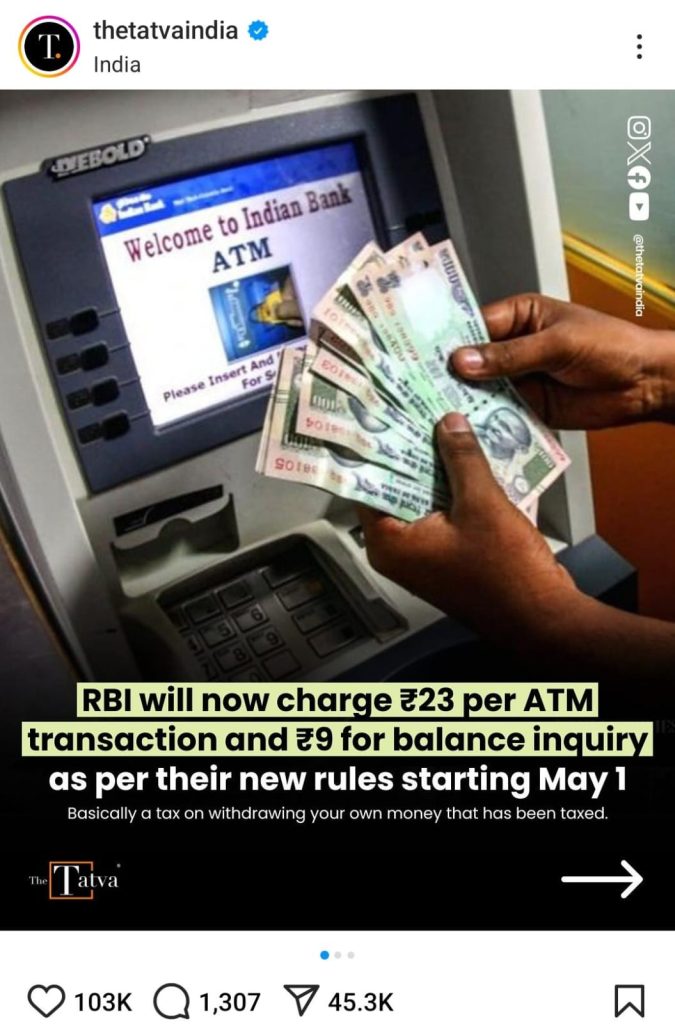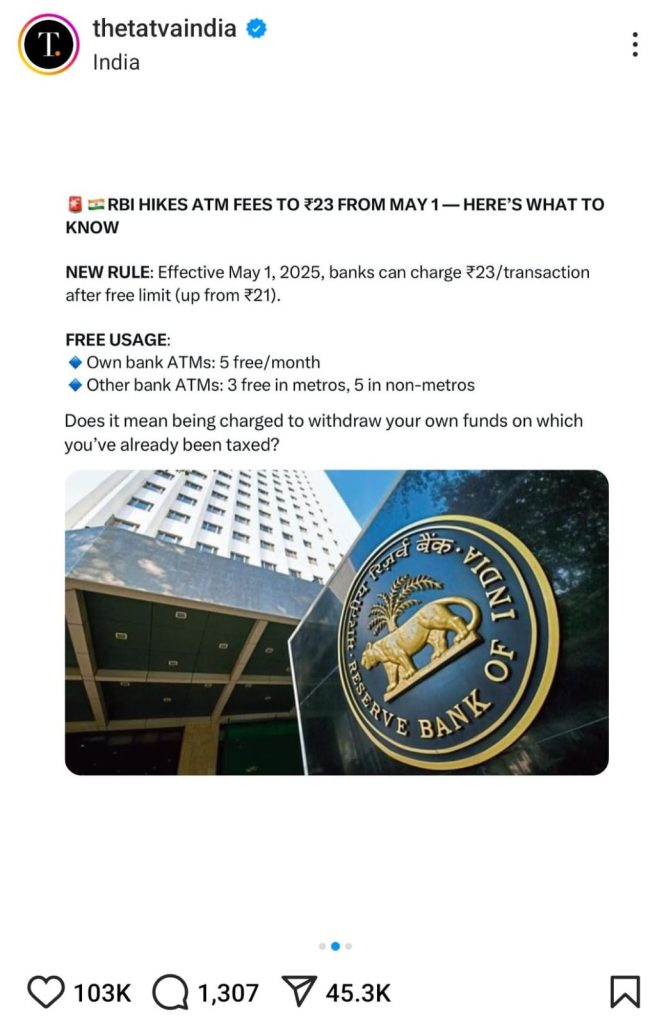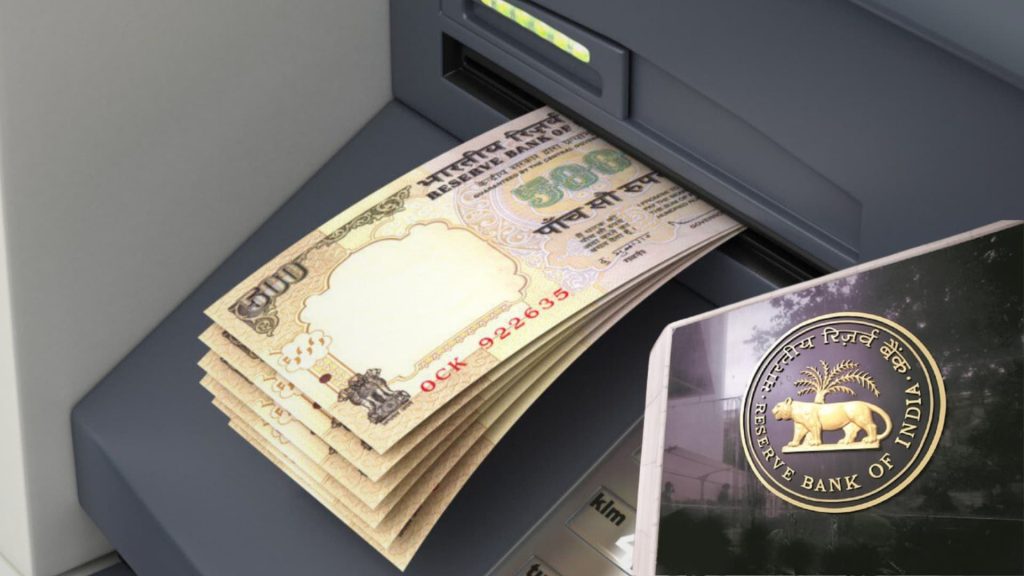Claim: Popular Social Media news handle ‘Tatva India’, shared a post claiming that ‘RBI will now charge Rs 23 per ATM transaction’, stating that it is ‘taxing’ your own money that is already taxed.


Our examination found the claim to be MISLEADING.
How we examined the claim:
- Is this charge new?
We examined the existing RBI guidelines concerning ATM charges and found that a per-transaction charge beyond a permissible free limit has always existed for ATM usage. This isn’t new. This fee has always existed for transactions beyond RBI’s free limit. In 2022 this cap was ₹21. Before that the charge was ₹20. Now (since May 1, 2025) the charge is ₹23, a ₹2 increase from the previous cap. This is a ₹2 adjustment, not a new policy.
2. Is this a tax?
The charge is not a ‘tax’ you pay to the government but instead a service fee paid to your bank for ATM usage beyond the free monthly limit. RBI regulation only puts an upper limit on what the banks can charge you, to ensure fair pricing. If you do not exceed the free limit, you pay nothing. In fact, if you rarely use ATMs, this policy does not affect you at all. Hence it is not a tax, but a service fee on discretionary services. Due to preference of Indians for UPI transactions, an average bank customer now withdraws cash from an ATM only 8 times per year or, less than 1 time per month (as per SBI’s Ecowrap, May 2023). RBI allows 8 to 10 free transactions per month, depending on location. So for most customers, these charges are irrelevant.
Conclusion:
The ₹23 ATM charge is neither new nor a government-imposed tax. It is a regulated service fee charged by banks only after a user exceeds free monthly limits.
RBI’s role as regulator is not to levy charges but to cap them, ensuring banks do not overcharge customers. Calling an existing service fee a “tax on your own money” is not only factually incorrect, it distorts public understanding of how regulated financial systems work. Therefore the claim is misleading.




